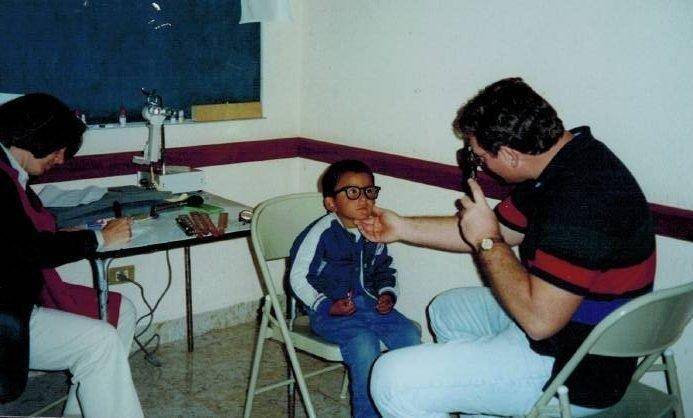Press Release
Dr. Barry P. Cook of Price has just returned from Casas Grandes, Mexico for another volunteer optometry service to Humanity Mercy Mission. The mission was to provide much needed free eye care to the poverty-stricken souls of that area. Donated eye wear was prepared locally by Boy Scout Eagle Projects organized by Noah Bradford, Adam Morley, Alan Cook and Nick Hernandez at Dr. Cook’s home each Sunday evening.
The scouts and volunteers prepared the donations to be dispensed in third world countries. The donated eye wear come from various sources and once eye wear comes in, that is when the work really starts. The first step is to have the eye wear washed, cleaned and dried. Eye wear cases are not accepted as they take up too much room. The repair of eye wear next happens with the warmer and standard dispensing tools to get the product in the best possible condition for distribution.
In the next step, each pair has to be neutralized as to the powers contained and if we have a bifocal or single vision, the label is provided to show the pullers exactly what is in the sack. After that, the eye wear is organized into suitcases for children’s, women’s bifocals, women’s single vision, men’s bifocals, men’s single vision and those with way-out powers.
The suitcases are checked on the airplane with us and our eye care tools of the trade as well as clothes for the whole project in order to have a need for washing clothing. We take back-ups just in case the tools do not function as needed. If our eye doctor group does not go, these folks would never receive the needed services. When our group arrives at the location for service, we need to combine the inventory of eye wear.
The doctors area must have darkness in order to be able to tell the external adnexea for anything that could lead to more serious conditions. The back of the eye is next evaluated for retinal health and natural lens changes as well as opacifications. Cataracts were the most common by far and was in preparation for the group to follow us in six months for cataract care.
The clinic was housed in the handicap school; we had our meals in this location and slept in a private residence home not far away. We did not keep track of how many patients we saw, but were very busy. The batteries in our scopes gave out as we were done for the day and had to charge up the batteries for the next-day patients. The adjustments for the new eye wear were conducted by the opticians that came with our group.
The doctors determine the powers needed by an instrument called a “retinoscope” to determine refractive error in each eye with a lens bar. The group also dilates the eyes with drops to get the pupil size larger and easier to examine. The doctors also treated eye injuries and infections as well as diseases. The group feels that they do a great service to these souls at no charge; the large service projects will continue in the future.
The members of the volunteer group funded their own expenses for airfare and food costs. The residents of Carbon and Emery counties played a key role in the mission’s success. The donation of used eye wear was critical to provide the gift of sight to these poverty-stricken souls of Mexico and other countries we have visited in the past.
“There is a huge difference in service to give an amount of money and to physically go to these souls and examine them face-to-face,” Dr. Cook stated.
We did have translators that helped with the language barriers. The week-long clinic will be remembered by the group for some time to come. Our group is planning to go again, but the place and date is not yet set. Dr. Cook continues to accept donated eye wear throughout the year and plans to continue with Boy Scout Eagle Projects in preparation for future missions.

